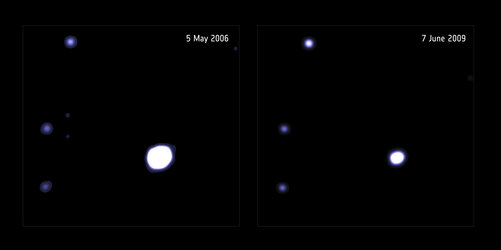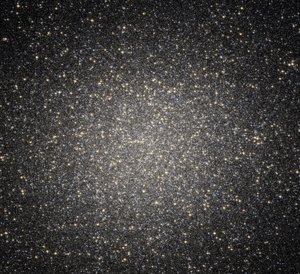Accept all cookies Accept only essential cookies See our Cookie Notice

About ESA
The European Space Agency (ESA) is Europe’s gateway to space. Its mission is to shape the development of Europe’s space capability and ensure that investment in space continues to deliver benefits to the citizens of Europe and the world.
Highlights
ESA - United space in Europe
This is ESA ESA facts Member States & Cooperating States Funding Director General Top management For Member State Delegations European vision European Space Policy ESA & EU Space Councils Responsibility & Sustainability Annual Report Calendar of meetings Corporate newsEstablishments & sites
ESA Headquarters ESA ESTEC ESA ESOC ESA ESRIN ESA EAC ESA ESAC Europe's Spaceport ESA ESEC ESA ECSAT Brussels Office Washington OfficeWorking with ESA
Business with ESA ESA Commercialisation Gateway Law at ESA Careers Cyber resilience at ESA IT at ESA Newsroom Partnerships Merchandising Licence Education Open Space Innovation Platform Integrity and Reporting Administrative Tribunal Health and SafetyMore about ESA
History ESA Historical Archives Exhibitions Publications Art & Culture ESA Merchandise Kids Diversity ESA Brand Centre ESA ChampionsLatest
Space in Member States
Find out more about space activities in our 23 Member States, and understand how ESA works together with their national agencies, institutions and organisations.
Science & Exploration
Exploring our Solar System and unlocking the secrets of the Universe
Go to topicAstronauts
Missions
Juice Euclid Webb Solar Orbiter BepiColombo Gaia ExoMars Cheops Exoplanet missions More missionsActivities
International Space Station Orion service module Gateway Concordia Caves & Pangaea BenefitsLatest
Space Safety
Protecting life and infrastructure on Earth and in orbit
Go to topicAsteroids
Asteroids and Planetary Defence Asteroid danger explained Flyeye telescope: asteroid detection Hera mission: asteroid deflection Near-Earth Object Coordination CentreSpace junk
About space debris Space debris by the numbers Space Environment Report In space refuelling, refurbishing and removingSafety from space
Clean Space ecodesign Zero Debris Technologies Space for Earth Supporting Sustainable DevelopmentApplications
Using space to benefit citizens and meet future challenges on Earth
Go to topicObserving the Earth
Observing the Earth Future EO Copernicus Meteorology Space for our climate Satellite missionsCommercialisation
ESA Commercialisation Gateway Open Space Innovation Platform Business Incubation ESA Space SolutionsEnabling & Support
Making space accessible and developing the technologies for the future
Go to topicBuilding missions
Space Engineering and Technology Test centre Laboratories Concurrent Design Facility Preparing for the future Shaping the Future Discovery and Preparation Advanced Concepts TeamSpace transportation
Space Transportation Ariane Vega Space Rider Future space transportation Boost! Europe's Spaceport Launches from Europe's Spaceport from 2012Latest

Best ever intermediate-mass black hole candidate
Thank you for liking
You have already liked this page, you can only like it once!
A NASA/ESA Hubble Space Telescope viewofgalaxy 6dFGS gJ215022.2-055059– the large white-yellow blob at the centre of the image – and neighbouring galaxies, combined with X-ray observations of a black hole at the galaxy’s outskirts – the small white-purple dot to its lower left – obtained with NASA’s Chandra X-ray observatory.
This is the best-ever candidate for a very rare and elusive type of cosmic phenomenon: a so-called intermediate-mass black hole in the process of tearing apart and feasting on a nearby star.
The discovery was based on data from ESA’s XMM-Newton X-ray space observatory, NASA’s Chandra and Swift X-ray telescopes, and a number of other telescopes on ground and in space, including Hubble.
This rare breed of black hole was spotted as it disrupted and tore apart a nearby star, gorging on the resulting debris and throwing off an enormous amount of light in the process. It has a mass of around fifty thousand times that of the Sun, and is located within a massive cluster of stars on the outskirts of a galaxy some 740 million light-years away.
This view comprises data from Hubble’s Advanced Camera for Surveys.
Explore this object in ESASky.
-
CREDIT
Optical: NASA/ESA/Hubble/STScI; X-ray: NASA/CXC/UNH/D. Lin et al. -
LICENCE
ESA Standard Licence

XMM-Newton view of intermediate-mass black hole candidate

Hubble hunts for intermediate-sized black hole close to home

Black hole candidate in Omega Centauri

Has Gaia found missing link in black hole evolution?















 Germany
Germany
 Austria
Austria
 Belgium
Belgium
 Denmark
Denmark
 Spain
Spain
 Estonia
Estonia
 Finland
Finland
 France
France
 Greece
Greece
 Hungary
Hungary
 Ireland
Ireland
 Italy
Italy
 Luxembourg
Luxembourg
 Norway
Norway
 The Netherlands
The Netherlands
 Poland
Poland
 Portugal
Portugal
 Czechia
Czechia
 Romania
Romania
 United Kingdom
United Kingdom
 Slovenia
Slovenia
 Sweden
Sweden
 Switzerland
Switzerland

























